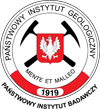The establishment of Devonian came with a debate among numerous 19th-century European geologists. In the end, Sir Roderick Murchison and Adam Sedgwick in 1839, established the new period, named after Devonshire, where the best rock exposures of that period are found.
Paleogeography
The early Devonian saw the last phases of the Laurussian (Euroamerica) formation. During the erosion of the new mountain belt, the new rock material was deposited in depressions and transported by rivers to the seas. Laurussia and Gondwana began coming together and closing the Paleo-Tethyan and Rheic Oceans between them.
Climate
The Devonian climate was generally warm and dry, with minimal differences in temperature between the equator and the poles. There was a brief, but extensive, glaciation period at the end of the Devonian.
Life on Earth
Reefs
The Devonian saw the intensive development of reefal environments, the largest in all of Earth’s history. They were built predominantly by encrusting red algae and stromatoporoids, with corals being a minor group.
The reign of fishes
The Devonian period witnessed an explosion in fish diversity, especially in jawed fishes: armoured (Placoderms) and cartilaginous (Chondrichthyes). Lobe-finned fishes were also common. They were the ancestors of terrestrial vertebrates.
Terrestrial vertebrates
The oldest footprint traces of vertebrates date back to 390 million years ago and were found in the Świętokrzyskie Mountains in Southern Poland. These prints were made by animals that probably measured up to 2 metres and had appendages with at least six fingers.
The green revolution
In the Devonian first forest-like ecosystems evolved, with some species reaching nearly 30 m in height. Deeper root systems stabilised the ground and produced organic compounds, which sped up the process of chemical weathering of rocks. The rapidly developing vegetation absorbed carbon dioxide, reducing its presence in the atmosphere and increasing atmospheric oxygen content. This atmospheric gas turnover led to climate change in the Late Devonian, which led to cooling and glaciation.
The great extinction
The onset of glaciation and alternation in sea and ocean chemistry (caused by extensive weathering) led to an environmental change and a consequent mass extinction event. Many species of brachiopods, trilobites, graptolites, and fishes went extinct, including all armoured fishes and most of the cartilaginous.
Do you know...
The largest known arthropod in the history of life lived in the Devonian period - the eurypterid Jaekelopterus. It could reach over 2.5 metres in length. The Pterygotus was not much smaller, also measuring over 2 metres.















